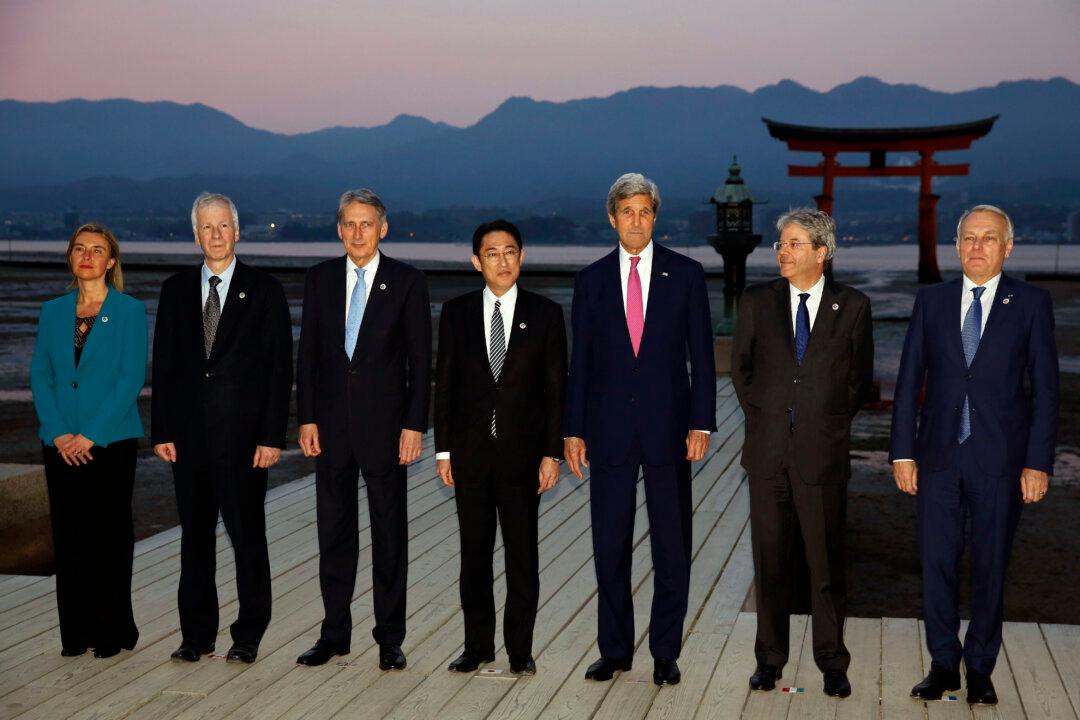HIROSHIMA, Japan—Foreign ministers from the Group of Seven industrialized countries are meeting in the western Japanese city of Hiroshima on Sunday and Monday.
Germany’s Frank-Walter Steinmeier was to miss the first day sessions due to aircraft problems at departure.
Here are five things to know about the annual gathering of the top diplomats from Britain, Canada, France, Germany, Italy, Japan, and the United States:
Why Hiroshima?
Japan hopes to send a message of non-proliferation and peace. Once all but annihilated by a U.S. atomic bomb, Hiroshima has risen back as a symbol of peace and nuclear disarmament. It’s also the hometown of host Foreign Minister Fumio Kishida. Hiroshima can also entertain the guests with its homegrown oysters, reputed to be Japan’s best, and the picturesque Miyajima shrine by the sea.
Kishida told Sunday’s reception that he hoped the experience would help the visiting ministers to “learn how Hiroshima has risen back from the atomic bombings to become the symbol of peace and hope.”





